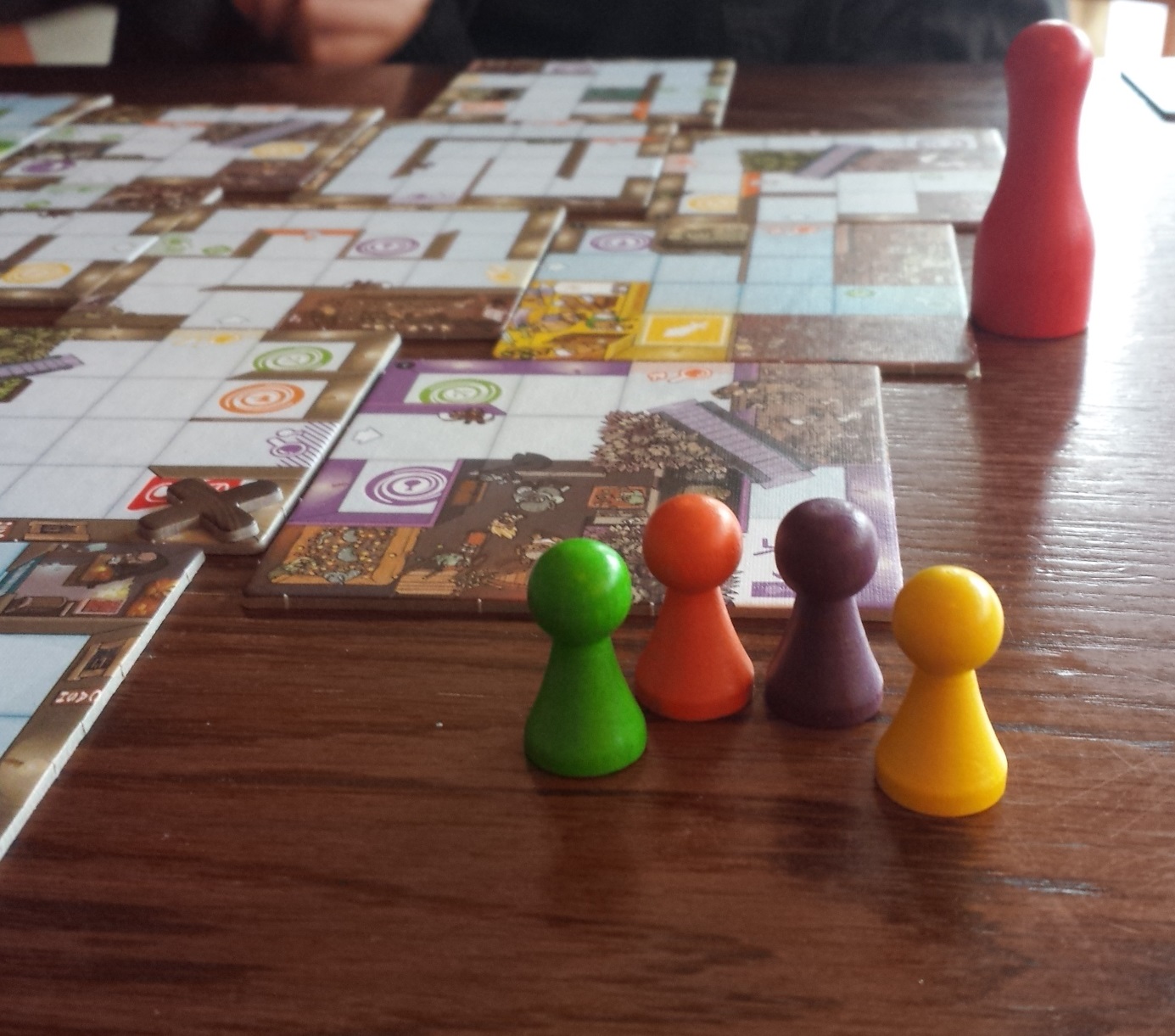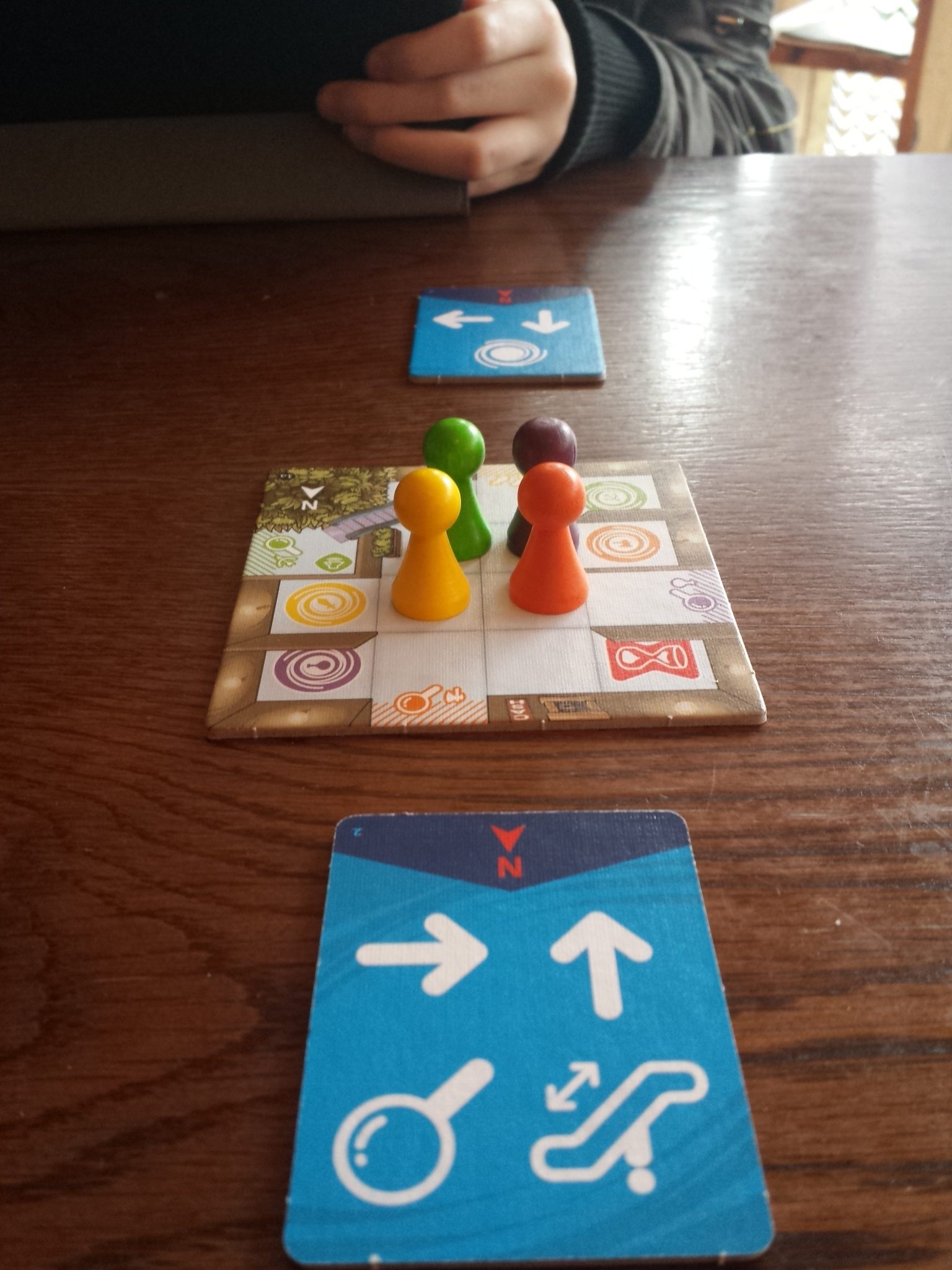
We all love work don’t we, and what do we love more than work? A training day. And the best type of training day? Joy of joys – a team building day. Well, what if I told you that for part of your team building day you can’t talk to your colleagues? If, like me you prefer to work in splendid isolation then this may be the team building day for you!
Cooperative gaming is all about working together as a team to overcome adversity or challenge. A kind of all for one and one for all mentality. You need to strategise and move as a team to survive. But in these silent games communication is no longer enough -you have to engage your empathy. No-one can just take control here and make all the decisions, so you are truly playing as a team.
Magic Maze

There are four heroes in Magic Maze: a mage, a barbarian, an elf and a dwarf. Our intrepid heroes must steal a vial, a sword, a bow and an axe respectively before escaping the shopping mall. Yes, that’s right – a shopping mall. Deliciously ridiculous – you must suspend your disbelief before we even start playing.
The game has 17 different scenarios and can be played solo or for up to 8 players. I like the fact that scenario 1 allows you to learn the mechanics of the game and as such is not too challenging at all. By scenario 3 you will have learnt all the rules of the game. Learning the rules in stages makes it very accessible.
Unlike other games anyone can move the heroes. You are not assigned a particular colour or role, instead you are assigned a movement ability. The cards depict different movements and abilities – North, South, up and down escalators, the ability to travel to vortexes or the ability to reveal and place another tile/ part of the magic maze. You all play at once, there is no turn taking which makes keeping track of where you are up to increasingly challenging.
Another unusual feature is the length of time you need to play. The game is played in real time and only takes around 15 minutes. It reminds me of Queen Games’ Escape from Zombie City and Escape the Curse of the Temple – both of which I thoroughly enjoy. There are differences though. The speed of play means you can play a few games of it and you can really feel your team getting better at it the more rounds you play. In common with the Escape games it is an intense experience so 15 minutes is enough for my nerves. After that I need time to regroup, discuss tactics with the team and then we can go again!
But of course, the most unusual feature of this game is that it is played in silence. The only way to communicate is to move the large red ‘Do Something Pawn’ in front of a player and look at them pleadingly whilst thinking ‘loudly’.
In order to play successfully you need to consider why other people are moving pawns in a particular direction; you need to consider what their strategy is. If everyone or even anyone tries to enforce their own strategy on others your team will fail. Unlike other cooperative games where you can agree strategy and adaptations as you go along in this game you need to observe and adapt on the go. You also need to be aware of what each characters’ abilities are so you know which person needs to move next. It epitomises team work – know the strengths and abilities of your team, be observant, be empathetic and be patient.

There are some opportunities to speak. When you land on a timer (another move that must be carefully activated to give you the maximum chance of triumphing) you may speak until someone moves a pawn. As soon as a piece is moved you must resume the game without speaking. And of course, all the time you are talking time is slipping past before your very eyes!
There are two halves to the game. In the first half you must work together to position the heroes so that they can all steal the objects at the same time. But, don’t forget to keep an eye on the timer, as you also need to be able to get a pawn to the timer space so that you can flip it and gain more time. A common tactical error in the first run through of the game.
One of the players is able to travel to vortexes which is a handy way to move the heroes to different tiles quickly but don’t get too used to it. In the second half, the vortexes are closed which makes getting around significantly trickier. Then you must work together to escape the mall undetected. As with all great games it is tricky but ultimately achievable and you can increase the difficulty level so that is always true.
The ‘Do Something Pawn’ has become something of a bone of contention in our house. I have recently turned the timer on its side in order to pause the game and remind my lovely family that ‘We don’t bang the pawn aggressively in front of one another and we don’t bang it over and over again in front of the same person DO WE?’ That’s right, we do not.
When I taught there was a game I played with groups (especially groups who were ‘struggling to bond’ shall we say). You all stand in a circle and you throw the ball round the circle. After you have thrown the ball you sit down. You remember who you threw it to. Then, we time it and you have to try to beat your time. The class have to trust me in order for this to work – even when they don’t trust each other. The second timed attempt – when they are trying to beat their own time is always (ALWAYS) a disaster. They shout at each other, they throw too hard or too high for the kid trying to catch, they are impatient and unforgiving.
So, I stop them – we pause. ‘What went wrong?’ I ask. I wait till they have blamed kids who couldn’t catch, kids who dropped the ball. Then I tell them that I did it with other classes who dropped the ball and they did it a lot faster. Then I ask the kids who couldn’t catch it ‘what could we have done differently?’. The answers were always the same – throw it gentler, slower, lower. Throw it to ‘that’ person in a way that ‘they’ can catch. If they drop it, don’t shout. Shouting makes you drop the ball and then fumble it. They work this all out themselves with various degrees of leading from me. Like I said they trusted me – it was a safe environment.

Then, we do it again. The transformation is amazing. They invariably smash their time and they know that everyone is an essential part of that victory. Working as a team is about working with individuals, observing, adapting. Magic Maze reminds me of this experience. Watching people play is magical. As adults we still need reminding of the basic values of teamwork and Magic Maze is a perfectly fun way to do it.
One of the Cards or Die training and team building experiences uses Magic Maze. When we say we offer unique team building packages, we’re not joking!
Board gaming doesn’t get more niche than this! If you enjoy cooperative games then you really need to up the ante and get involved with silent, or limited communication, cooperative games. You might also want to check out Assembly and Get Adler which both limit communication. Cooperative games really test whether you are a lone wolf or a team player – and playing in silence pushes this to the limit.